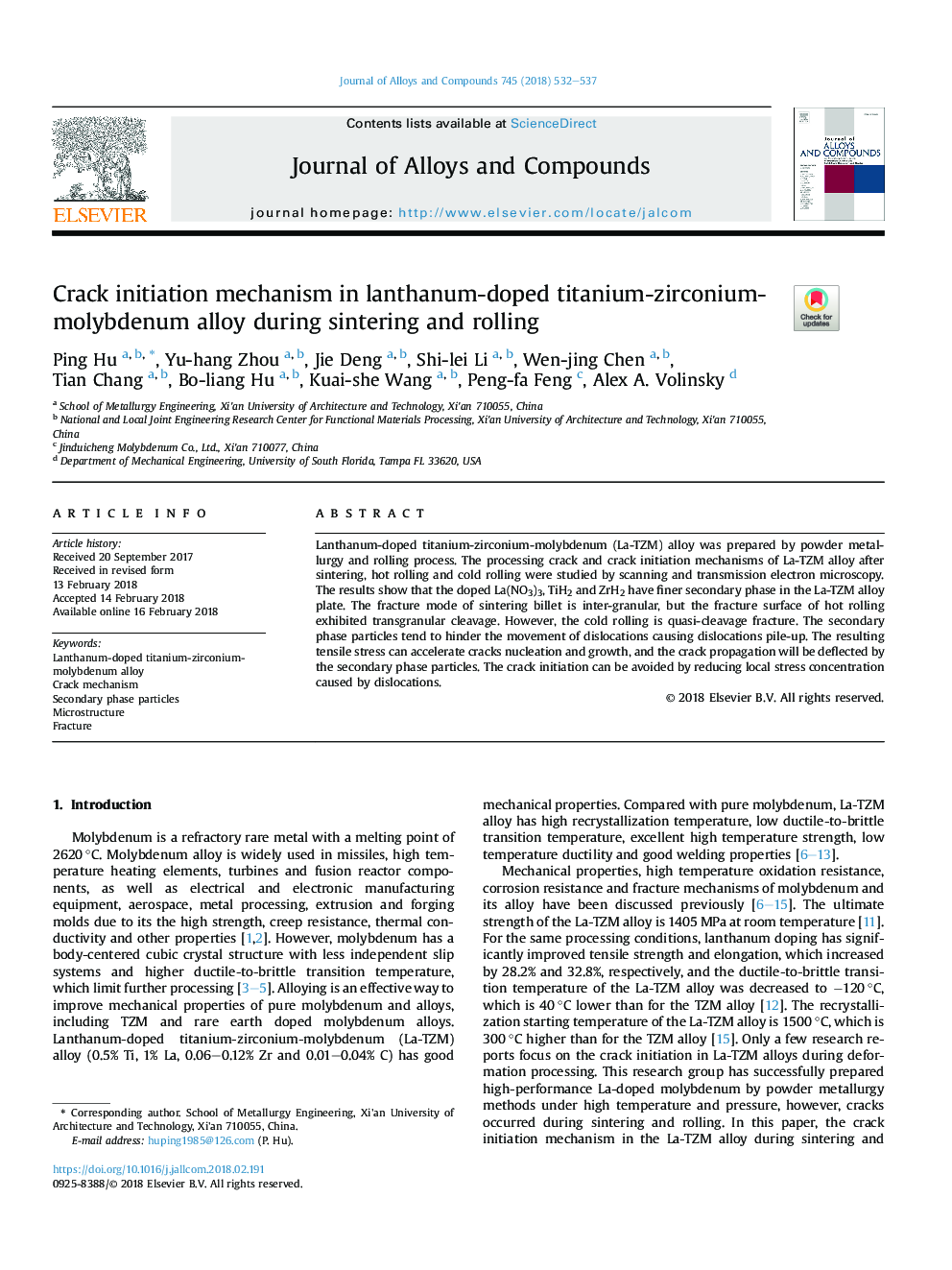| Article ID | Journal | Published Year | Pages | File Type |
|---|---|---|---|---|
| 7992840 | Journal of Alloys and Compounds | 2018 | 6 Pages |
Abstract
Lanthanum-doped titanium-zirconium-molybdenum (La-TZM) alloy was prepared by powder metallurgy and rolling process. The processing crack and crack initiation mechanisms of La-TZM alloy after sintering, hot rolling and cold rolling were studied by scanning and transmission electron microscopy. The results show that the doped La(NO3)3, TiH2 and ZrH2 have finer secondary phase in the La-TZM alloy plate. The fracture mode of sintering billet is inter-granular, but the fracture surface of hot rolling exhibited transgranular cleavage. However, the cold rolling is quasi-cleavage fracture. The secondary phase particles tend to hinder the movement of dislocations causing dislocations pile-up. The resulting tensile stress can accelerate cracks nucleation and growth, and the crack propagation will be deflected by the secondary phase particles. The crack initiation can be avoided by reducing local stress concentration caused by dislocations.
Keywords
Related Topics
Physical Sciences and Engineering
Materials Science
Metals and Alloys
Authors
Ping Hu, Yu-hang Zhou, Jie Deng, Shi-lei Li, Wen-jing Chen, Tian Chang, Bo-liang Hu, Kuai-she Wang, Peng-fa Feng, Alex A. Volinsky,
